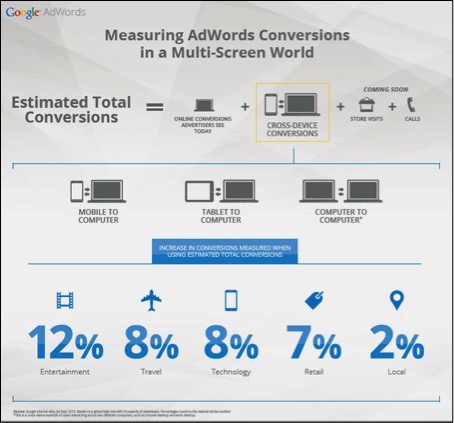It’s The Year Of Mobile…Again!

As PPC account managers not a year goes by where we don’t get told this is the year mobile is going to take over the world and change our lives forever. I think we can all agree that mobile devices have taken over our personal lives over the past few years with the advances in smart phones and tablet technology. However, as PPC account managers we haven’t been at the stage where mobile is ruling our paid search account strategies, until the past 12 months.
This notion is best illustrated by looking at the smart phones released in late 2014. Are they a phone or tablet? There is huge crossover between the 2 meaning smart phones become a lot more appealing for browsing and shopping online. Here is where the game starts to change for search advertisers.

Our strategies need to take these retail considerations into mind as advertising on mobile devices becomes increasingly crucial. It is rumoured that 50% of all digital spend will be on mobile devices by 2018. Everyone knows the types of things we should be doing to react to this data – getting mobile sites, creating mobile ads, pushing our apps to our engaged customers – you have heard it all before! So why aren’t we all increasing our bids to be +300% on mobile devices?
The challenge is performance. How can we measure and show our clients the value?
In my experience, showing good performance can be quite hard work as conversion rates tend to be lower on mobile devices than on other devices. Why? Because we live in a multi device world baby!

Having spent the last 5 years educating clients on how awesome search is because you can see results and the direct response, it is challenging to get clients to understand that mobile stats should be taken with a pinch of salt and a huge volume of consideration.
Mobile device results cannot be expected to mirror image desktop results because these are different devices and people use them in different ways. Mobile devices are a convenience tool that we use to entertain us whilst we are doing other things. We love to research on our mobile devices but won’t necessarily buy. This doesn’t mean we shouldn’t include them in our marketing strategy as they provide a role in the path to direct response. If you aren’t present during research stage, chances are they might not remember you when they come to purchase.
Google has helped us better explain mobile importance to clients by providing us with estimated total conversions.
This metric does exactly what it says on the tin as it estimates the amount of conversions that may have happened across multiple devices based on a sample of logged in users. This data gives you an indication of how mobile devices may be contributing to the entirety of your paid search conversions. This additional insight can really help you in showing the value of your mobile marketing strategy to your clients.
Google has done some research into the impact this column has had on different verticals. You can see the uplift in conversions for different verticals here:

I ran a report on this metric for one of my clients and saw on average a 9% uplift in conversions on mobile devices when I factored this column into my stats. This data really changed the way I looked at my mobile strategy, as it meant that within some of my campaigns and ad groups mobile was a really important conversion driver. Based on this data I adjusted my mobile bid multipliers and ensured I had optimised mobile text. I was lucky that my client already had a great mobile site.
Conclusion
As PPC account managers we should all be taking this data into consideration when analysing our mobile strategies as it could really change the way we think and communicate to our clients. Whilst it is not 100% accurate (it is estimated total conversions) it is a step in the right direction to understand the impact mobile has on other devices and the path to conversion. And this is something we need to be factoring in, in order to keep up with changes in consumer behaviour.
One consideration to stress is that this process needs to be ongoing. Make sure you are continually updating your bids and evolving your mobile strategy. This should become part of your regular optimisation routine.
Over the next 12 months I expect Google will continue to bring out new features which will further compliment mobile strategies and our understanding of mobile traffic performance.
Please let me know if you have any questions or comments in the box below.



